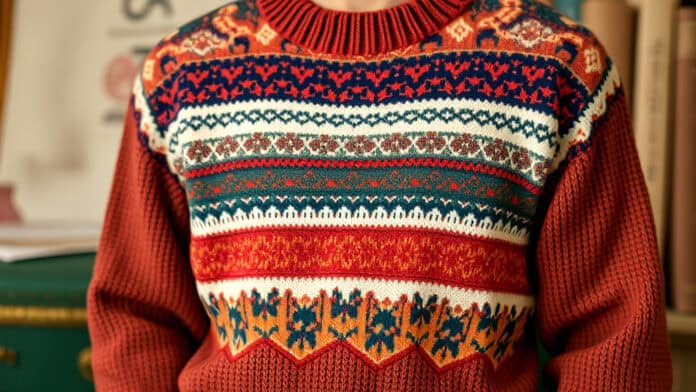Free 1940s Knitting Patterns
Step back in time to the 1940s with a collection of free knitting patterns that embody the era’s unique charm. This guide is your gateway to an array of vintage knitting patterns perfect for every enthusiast. Whether you’re a seasoned knitter or just starting, you’ll find practical tips and resources to enrich your crafting experience.
You can explore digital vintage knitting archives filled with vintage pattern files that are now in the public domain. Websites like the Antique Pattern Library and Project Gutenberg offer numerous options. Get ready to knit classic styles like the summer mist jumper or a beautiful sweater knitting pattern. Let’s get those needles clicking!
Key Takeaways
- Access free vintage knitting patterns online through sites like the Antique Pattern Library and Project Gutenberg.
- Explore popular 1940s knitwear styles like sweaters, vests, and jackets with intricate designs.
- Gather essential supplies such as knitting needles, yarn, and a crochet hook for your projects.
- Maintain consistent tension to ensure your vintage pieces turn out beautifully.
- Join online knitting communities to share projects and gain inspiration from fellow knitters.
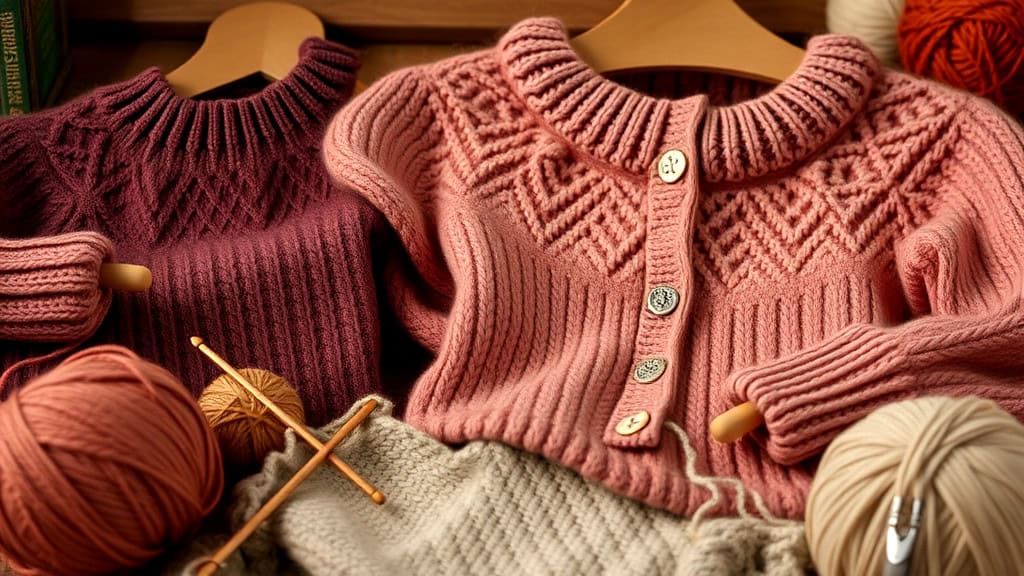
Popular 1940s Knitwear Styles
Knitwear styles from the 1940s truly reflect the charm of the era. Popular garments included sweaters, vests, and cardigans, often adorned with striking Fair Isle patterns. These designs combined warmth with a touch of elegance, making them staples in wardrobes.
Another iconic piece was the jumper knitting pattern, which became a favorite among knitters. The jumpers often featured high collars and ribbed details, adding sophistication to casual outfits. Accessories like knitted berets and gloves complemented these styles beautifully.
You could find vintage knitting patterns showcasing intricate textures, giving each piece a unique flair. The fashion of the 1940s emphasized practicality without sacrificing style, appealing to women who desired both function and fashion.
For those looking to recreate these timeless pieces, free 1940s knitting patterns provide a perfect starting point. They allow knitters to explore the past while creating wearable art for today.
Here’s a glance at some notable styles and patterns from the decade:
| Garment Type | Key Features | Example Patterns |
|---|---|---|
| Sweater | Fair Isle patterns | Vintage sweater design |
| Vest | Ribbed details | Classic vest pattern |
| Cardigan | Textured stitches | Elegant cardigan style |
| Jumper | High collars | Iconic jumper knitting |
| Accessories | Matching items | Vintage knit accessories |
Accessing Free Digital Pattern Libraries
Finding free digital pattern libraries can open up a world of creativity. Start your search with sites like the Antique Pattern Library, where you can browse an extensive collection of vintage knitting patterns. The library features PDF downloads, making it easy to access and print your favorites.
Project Gutenberg is another excellent resource. By searching for terms like “needlework,” you can discover a variety of e-books containing patterns. These materials are in the public domain, allowing you to recreate timeless styles without any copyright issues.
For a more niche experience, explore dedicated vintage knitting pattern archives. These sites categorize patterns by decade, helping you find that perfect jumper knitting pattern or a classic sweater knitting pattern from the 1940s.
Don’t overlook online communities as well. They often share links to free resources and offer inspiration. Engaging with others can enhance your skills and even lead to discovering rare finds.
So, start your journey with these resources. Whether you’re looking for a simple garment or intricate designs, there’s a treasure trove waiting for you. Happy knitting!
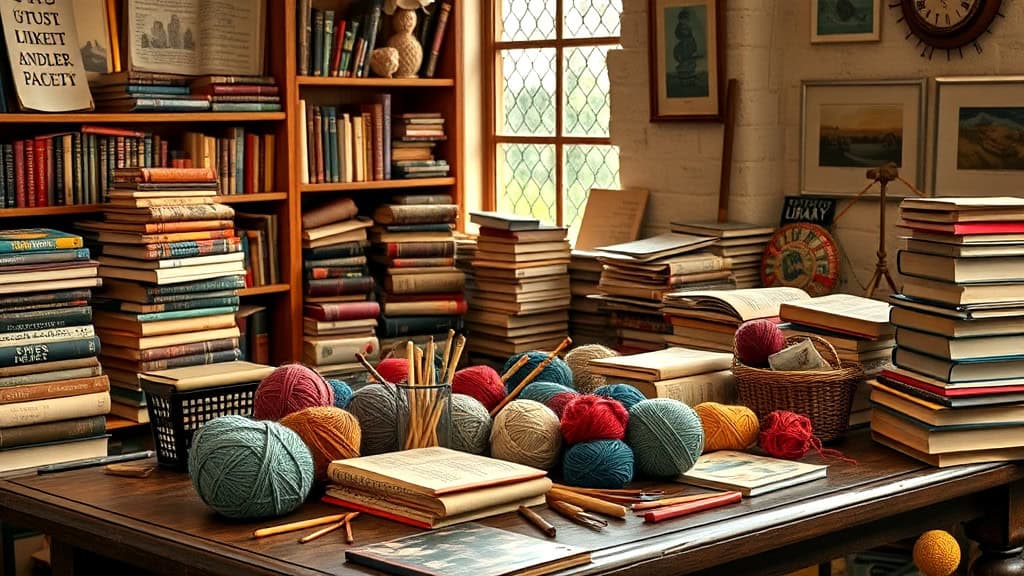
How to Use Antique Pattern Library
Navigating the Antique Pattern Library is straightforward and rewarding for any knitting enthusiast. Begin by visiting the library’s website and selecting the knitting section. Here, you’ll find an extensive collection of vintage knitting patterns waiting to inspire your next project.
- Use the search function to find specific patterns or browse by category.
- Look for free 1940s knitting patterns that catch your eye.
- Download your chosen patterns in PDF format for easy access.
- Print the patterns or save them on your device for future reference.
- Join the community discussions to share your progress and get tips from fellow knitters.
The library focuses on preserving historic patterns, making it an invaluable resource. You’ll discover unique designs that reflect the charm of the past. For instance, some patterns feature classic Fair Isle motifs that are perfect for creating stunning sweaters.
As you explore, remember to check compatibility with modern yarns. Many vintage designs can be adapted using contemporary materials. Embrace the joy of knitting while connecting with a rich history.
For a practical example, the Land Girls Fairisle Sweater can be found here.
Finding Patterns on Project Gutenberg
Project Gutenberg offers an excellent platform for those searching for free 1940s knitting patterns. Its extensive collection includes numerous e-books filled with vintage designs.
To find what you’re looking for, start by using specific search terms like “needlework” or “knitting.” You’ll be surprised by the variety of patterns available. Each e-book is free to download, making it a perfect resource for knitting enthusiasts.
While exploring, pay attention to the details in the patterns. They often reflect the unique styles of the 1940s, showcasing intricate stitches and timeless designs. Whether you’re interested in a cozy sweater or an elegant vest, you’ll find gems that inspire your next project.
Don’t forget to check the digital vintage knitting section for more refined searches. You might stumble upon a classic pattern that captures the essence of the era.
For those who love a challenge, try recreating a summer mist jumper. It’s a stylish piece that embodies the charm of vintage knitwear.
With a little patience, you can easily navigate Project Gutenberg and uncover delightful treasures in the world of knitting. Happy crafting!
Exploring Vintage Knitting Pattern Archives
Accessing vintage knitting pattern archives opens a world of creative possibilities. These repositories often categorize patterns by decade and style, making it easy to browse through a rich history. For those seeking free 1940s knitting patterns, the internet is a goldmine.
Many websites offer digitized versions of original patterns, including the Antique Pattern Library and Project Gutenberg. These resources are perfect for anyone wanting to recreate classic designs. You can find everything from elegant cardigans to cozy sweaters that reflect the unique aesthetics of the 1940s.
When exploring these archives, look for specific features like Fair Isle designs or textured stitches that were popular during the era. These distinct elements not just enhance your projects but also connect you with knitting history.
For a taste of authentic vintage knitting, consider downloading patterns directly. One example is the Land Girls Fairisle Sweater, which showcases the iconic style of its time.
Diving into these archives is a delightful way to embrace the art of knitting while celebrating the charm of yesteryears. So grab your needles and start exploring!
Essential 1940s Knitting Supplies
Getting your hands on the right supplies is key to embracing the vintage knitting scene. Start with some sturdy knitting needles in various sizes. These are essential for different yarn weights and pattern complexities. A good pair of circular needles can also come in handy for larger projects.
Next, stock up on high-quality yarn. Look for options that match the fiber content used in vintage knitting patterns. Wool is a classic choice, as it offers warmth and structure. Don’t forget a crochet hook for finishing touches.
Consider keeping a knitting journal. Jotting notes about your projects will help track progress and successes. It’s a great way to improve your skills over time.
Lastly, gather some handy tools like stitch markers, tape measures, and a pair of scissors. These little items can make a big difference.
| Item | Purpose | Recommended Type |
|---|---|---|
| Knitting Needles | For creating stitches | Straight and circular |
| Yarn | Main material for projects | Wool or cotton |
| Crochet Hook | For finishing and patterns | Aluminum or plastic |
| Stitch Markers | To keep track of stitches | Plastic or locking |
| Knitting Journal | Documenting projects | Notebook or digital app |
- Gather knitting needles.
- Choose high-quality yarn.
- Get a crochet hook.
- Keep a knitting journal.
- Collect handy tools.
Tips for Knitting Vintage Patterns
Achieving success with vintage patterns requires specific techniques. Focus on maintaining consistent tension throughout your projects. This skill is key to making your finished pieces look polished and professional.
Familiarize yourself with common knitting mistakes to prevent mishaps. Knowing what to look for and how to fix errors can greatly enhance your confidence. It also improves your overall knitting experience.
When working with free 1940s knitting patterns, select yarn that matches the original specifications. Vintage patterns often use specific yarn weights and fibers. Making substitutions can change the overall look and fit of your project.
Always check your gauge before starting. A small swatch can save you a lot of trouble later. If the gauge differs, adjust your needle size accordingly.
Consider using resources like vintage knitting books for additional insights. They often contain tips and tricks unique to the era. Lastly, don’t hesitate to reach out to online communities for support. Engaging with other knitters helps enrich your understanding of vintage techniques.
Embrace the charm of the past while creating beautiful pieces that stand the test of time. Happy knitting!
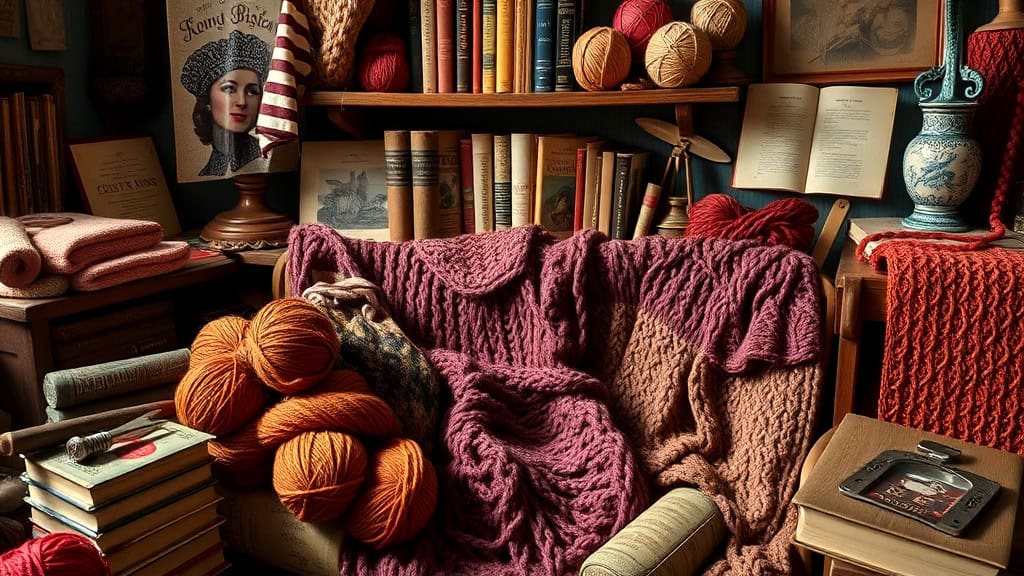
Maintaining Consistent Tension
Achieving uniform tension is key for any successful knitting project. When working with free 1940s knitting patterns, especially those with intricate designs, maintaining this consistency can make all the difference.
Start by practicing your technique. Regular practice will help you develop a natural rhythm, which is essential. Don’t be shy about experimenting with different yarns and needle sizes. The right combination can enhance your tension significantly.
Pay attention to your grip on the yarn. Holding it too tightly can lead to stiff stitches, while a loose grip may cause uneven tension. Find a comfortable balance that feels right for you.
Using a consistent method for casting on and binding off will also contribute to a neat finish. If you notice variations in your tension, consider making small adjustments as you go.
Keeping a knitting journal can be beneficial. Jotting notes about what works and what doesn’t helps track your progress and improve over time.
Finally, don’t forget to have fun! Enjoy the journey as you create beautiful pieces from the past. With practice and attention, you’ll soon master the art of consistent tension, bringing those vintage knitting patterns to life beautifully.
Avoiding Common Knitting Mistakes
Mistakes in knitting can be frustrating, especially when working with free 1940s knitting patterns. One common issue is misreading the pattern. Always double-check instructions and gauge before starting. If the pattern is unclear, consult online forums for clarification or tips.
Another frequent error is skipping gauge swatches. Knitting a swatch ensures your tension matches the pattern, preventing size issues. It’s a little extra effort that saves a lot of heartache.
Counting stitches may seem trivial, but it’s crucial. Losing track can lead to uneven edges or incorrect stitch counts. Use stitch markers to keep track of repeats or sections.
Looming large in many knitting woes is the lack of proper tools. Ensure your needles are the right size and your yarn weight matches the pattern to avoid headaches later.
Lastly, embrace mistakes as learning opportunities. If you drop a stitch or mess up a row, don’t panic. Fix it or rip back to the error and start fresh.
Here’s a handy table for quick reference on common knitting errors:
| Mistake | Solution | Resources |
|---|---|---|
| Misreading patterns | Double-check instructions | Online knitting forums |
| Skipping gauge swatches | Always knit a swatch | Free 1940s knitting patterns |
| Losing track of stitches | Use stitch markers | Knitting apps |
| Using wrong tools | Check needle/yarn sizes | Craft stores |
| Panic over mistakes | Embrace and learn | Knitting communities |
Iconic 1940s Sweater Patterns
The charm of 1940s sweater designs lies in their unique aesthetics and craftsmanship. Here are some standout features and patterns that defined this era:
- Fair Isle Patterns: These colorful motifs added depth and character to sweaters.
- Textured Stitches: Techniques like cables and ribbing provided warmth and visual interest.
- Boxy Silhouettes: Many designs favored a loose fit, perfect for layering.
- Unique Color Palettes: Earthy tones and pastels dominated, reflecting the decade’s style.
- Vintage Knitting Books: Resources from the time offered a wealth of creativity and inspiration.
- Classic Styles: Patterns often included cardigans, pullovers, and vests.
- Embroidery Accents: Some designs showcased floral or geometric embroidery for added flair.
- Simple Construction: Many patterns emphasized ease of knitting, making them accessible for all skill levels.
For those seeking to recreate these stunning pieces, numerous free 1940s knitting patterns are available online. Websites like the Antique Pattern Library provide access to these vintage gems. The blend of style and practicality in these designs continues to inspire knitters today. Whether you’re a novice or an experienced crafter, these patterns hold timeless appeal.
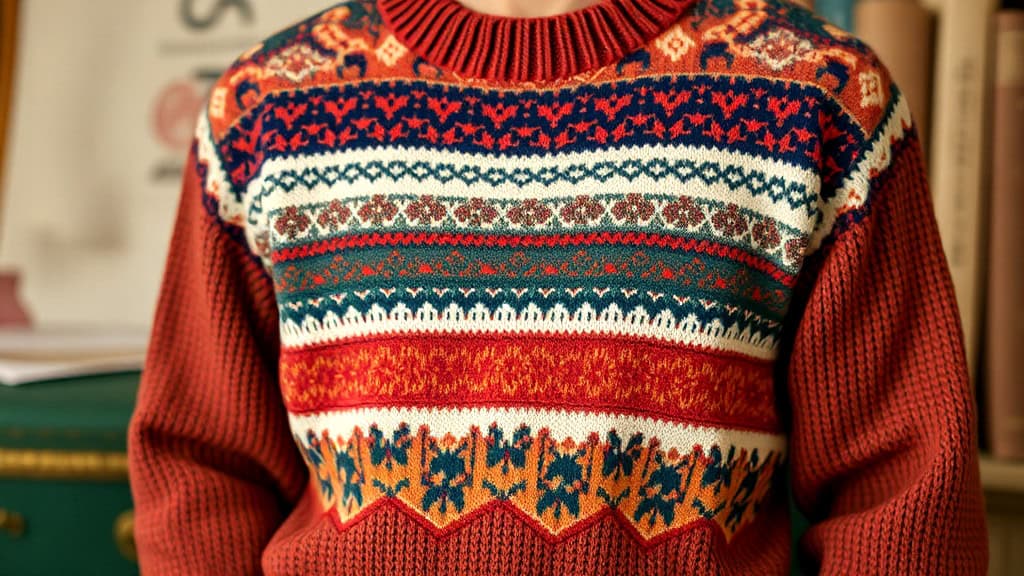
Step-by-Step: Knitting a Jumper
Knit your way through the charming process of creating a classic jumper. Begin by selecting a free 1940s knitting pattern that suits your style. Gather your materials: yarn, needles, and any extras like stitch markers.
Start by casting on the required number of stitches. It’s essential to keep your tension even throughout the project. Knit the ribbing for the hem to give it that authentic vintage flair. This usually involves alternating between knit and purl stitches.
Once the ribbing is done, transition to the body of the jumper. Follow the pattern closely for stitch counts and any increases or decreases. Take breaks if needed; a fresh perspective can help avoid mistakes.
As you approach the armholes, be mindful of the shaping. Many vintage patterns include specific techniques to create a flattering fit. After finishing the body, move to the sleeves. They can be knitted flat or in the round, depending on your chosen design.
After completing all pieces, it’s time for assembly. Sew the seams carefully, ensuring everything aligns perfectly. Lastly, block the jumper to enhance its shape and finish. Enjoy wearing your beautiful creation while embracing the spirit of vintage fashion!
Preserving Vintage Patterns for the Future
Caring for and preserving vintage patterns ensures their legacy for future knitters. Proper storage methods extend the life of these cherished designs. Here are some effective practices to maintain your collection:
- Store in a cool, dry place. Humidity and heat can damage patterns over time.
- Use acid-free materials. Protect patterns from yellowing and deterioration with acid-free folders and boxes.
- Handle with care. Always wash your hands before touching delicate patterns to prevent oils or dirt transfer.
- Digitize your collection. Scanning patterns creates a digital backup, allowing easy access without physical wear.
- Share with others. Engage in knitting communities to exchange ideas and patterns, ensuring these vintage treasures remain vibrant.
- Use archival ink and paper. When making copies, select materials that won’t fade or degrade.
- Create a catalog. Keep an organized record of your patterns, noting their condition and any alterations made.
- Educate fellow knitters. Share tips on preserving vintage knitting patterns and the importance of maintaining these historical artifacts.
By following these steps, your vintage collection will inspire future generations of knitters, especially those seeking free 1940s knitting patterns.
Joining Online Knitting Communities
Connecting with online knitting communities offers a vibrant way to share your love for crafting. By sharing your projects, you can receive feedback and suggestions from fellow enthusiasts. They can also inspire you with new ideas, especially when exploring free 1940s knitting patterns.
These communities provide a platform for learning and exchanging tips. If you encounter issues with a particular pattern or technique, someone in the group likely has the answer. Engaging in discussions about vintage styles can deepen your appreciation for historical designs, helping you refine your skills.
Social media groups and dedicated knitting forums are excellent places to start. You can showcase your finished pieces, like the charming summer mist jumper, and engage with others who appreciate the same era.
Many members are excited to share their own collections of digital vintage knitting resources. This can lead you to rare finds or even forgotten gems.
Participating in group challenges or knit-alongs can motivate you to tackle projects you might otherwise avoid. The camaraderie of these knitters can make your knitting journey all the more enjoyable. So grab your needles and dive into these lively communities!
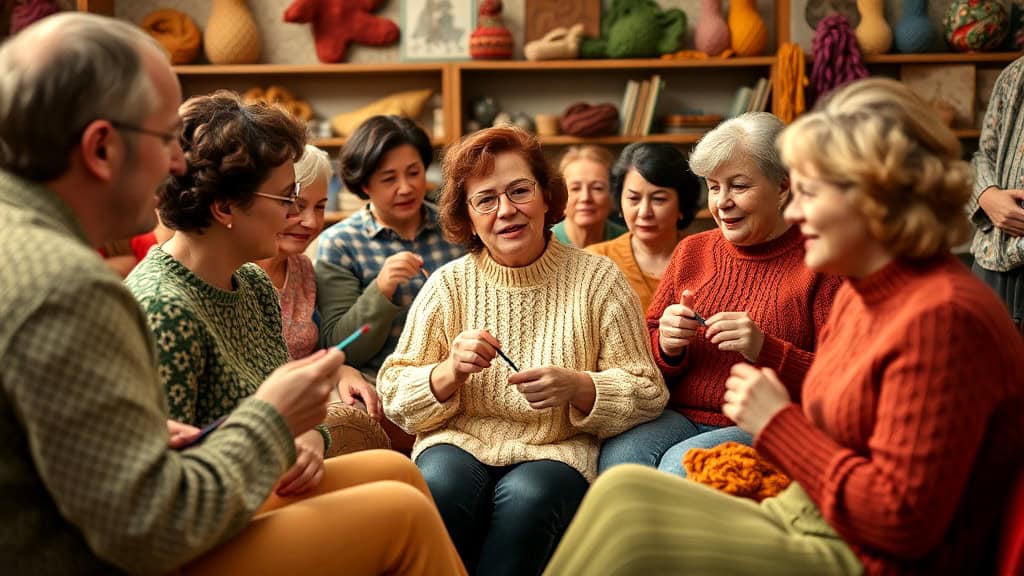
Benefits of Sharing Projects and Ideas
Sharing your projects and ideas brings a wealth of benefits. Connecting with others can inspire creativity and enhance your skills. When you share, you expose yourself to diverse perspectives that can reshape your approach.
Online communities thrive on collaboration. Whether you’re showing off your latest creation or seeking feedback, these interactions can spark new techniques or styles. When discussing patterns, like free 1940s knitting patterns, you may discover unique insights that can refine your own knitting practice.
Moreover, sharing encourages accountability. When you commit to showing your progress, you’re more likely to stay motivated. This sense of community support can transform a solitary hobby into a shared adventure.
You can also learn from the mistakes of others. Observing how fellow knitters tackle challenges can provide valuable lessons and save you time. It’s a win-win situation where everyone grows together.
Finally, sharing can introduce you to style sewing patterns that you might not have encountered on your own. This exchange of ideas can breathe life into your projects and keep your knitting journey exciting. So, step out and engage with others. The rewards will enrich your experience!
Conclusion
Exploring 1940s knitting patterns opens up a world of creativity and nostalgia. The distinct styles from this era add charm and character to your wardrobe. Engaging with these patterns not just hones your skills but connects you to a rich history of craftsmanship.
Joining online communities can further enrich your knitting journey. Sharing your projects and experiences creates a supportive environment where you can learn and grow. So grab your needles, pick a pattern, and enjoy the satisfying process of bringing vintage designs to life. Happy knitting!
FAQ
- What are some popular styles of knitwear from the 1940s?
The 1940s featured sweaters, vests, and jackets. Many designs showcased Fair Isle patterns and textured stitches. These styles were both warm and elegant, perfect for everyday wear. - How can I find free vintage knitting patterns online?
You can access free patterns on sites like the Antique Pattern Library and Project Gutenberg. These libraries offer digitized patterns from the public domain, allowing you to download your favorites. - What supplies do I need to start knitting 1940s patterns?
Essential supplies include knitting needles, yarn, and a crochet hook. A knitting journal can help you track your progress and maintain consistency. - How can I avoid common mistakes when knitting vintage patterns?
Learning about common knitting errors is key. Recognize mistakes early and practice regularly to improve your skills and confidence. - Why should I join online knitting communities?
Online communities let you share projects and gain inspiration. Collaborating with others can enhance your skills and deepen your understanding of vintage knitting techniques.

